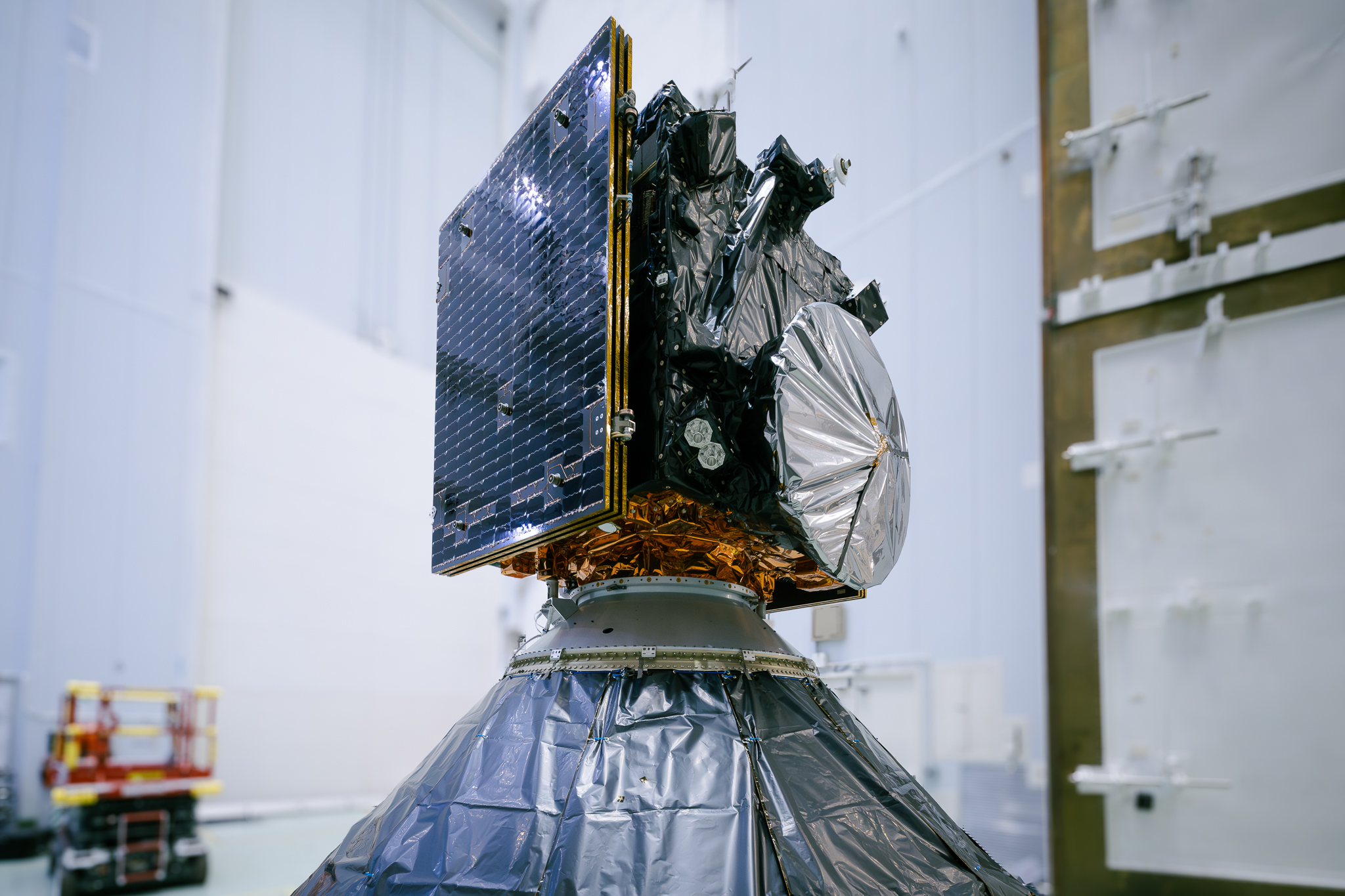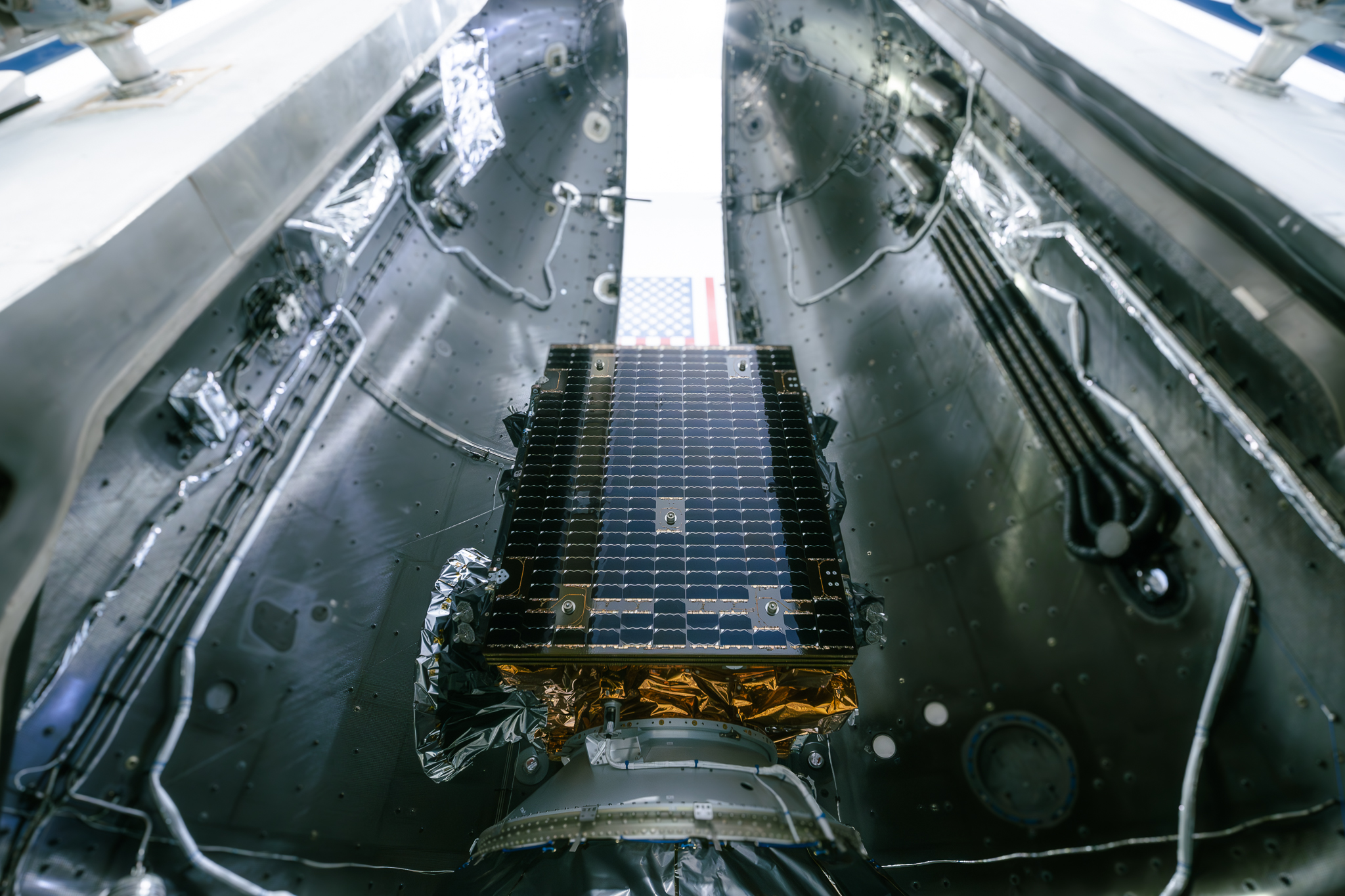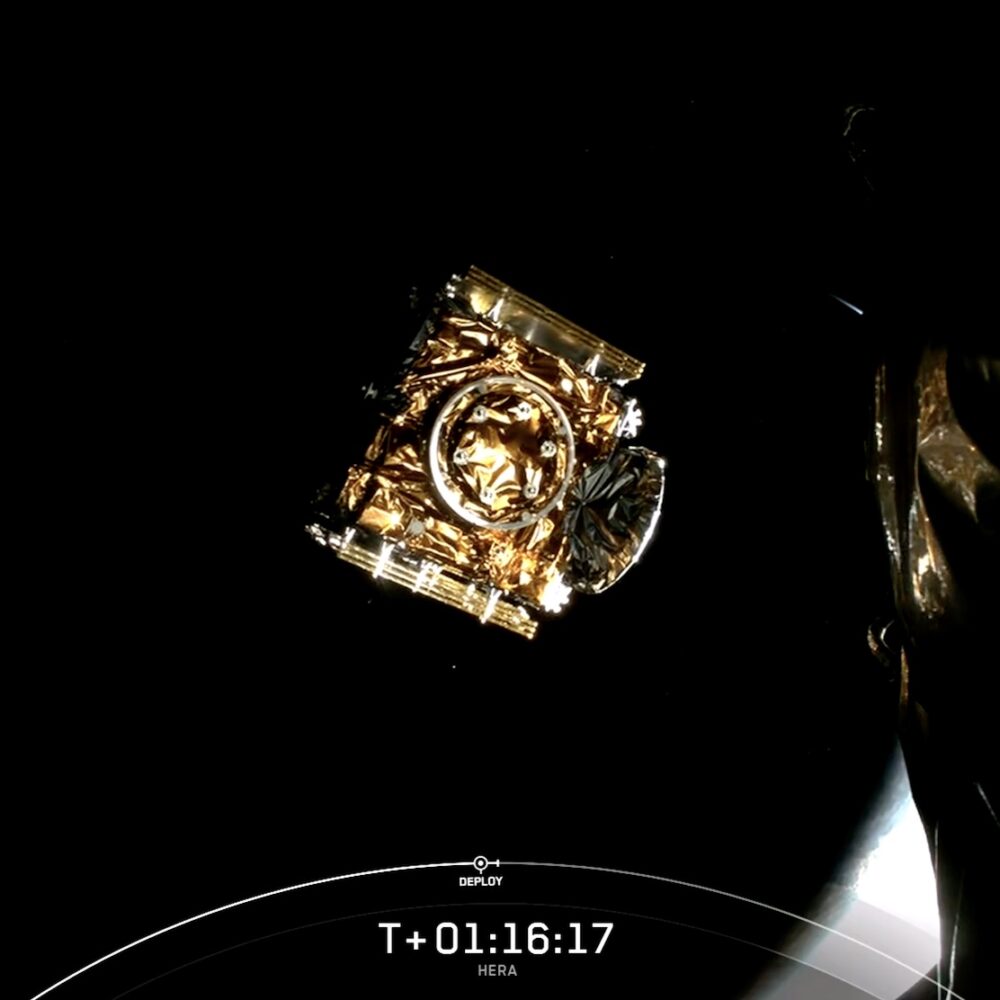Gleich zwei HPS-Beiträge an Bord der Transporter 12-Mission am 14. Januar 2025
HPS Space News
Das hat es selbst bei HPS noch nicht gegeben: gleich zwei Produkte des Hauses sind mit einer Mission der Falcon 9 auf dem Weg zu einer sonnensynchronen Umlaufbahn. Möglich macht es die Mitflugversion der SpaceX-Rakete unter dem Namen „Transporter 12“.
Die Beiträge von HPS betreffen zum einen die hoch innovative Reflektor-Antenne BANT-1 für den Premierensatelliten des Hauses Reflex Aerospace – siehe dazu auch die HPS-News „HPS gratuliert Reflex Aerospace“ vom heutigen 14. Januar.
Zum anderen ist ein Beitrag von HPS selbst die Premiere. Denn zum ersten Mal haben HPS Deutschland und HPS Rumänien gemeinsam eine Flughardware mit der MLI-Isolierung des zentralen Radiators so präpariert, dass die thermo-optischen Eigenschaften des Satelliten auch unter widrigsten Bedingungen des Raums erhalten bleiben.
Bei dem Satelliten handelt es sich um Sky Bee-1; er ist Teil einer thermalen Infrarot-Konstellation HiVE, die mit einer Auflösung von 30 Metern täglich hochpräzise und dennoch kostengünstige Temperaturdaten der weltweiten Landoberflächen zum Nutzen von Agrarwirtschaft sowie städtischen und industriellen Umgebungen liefert. Die HPS-Teams beider europäischen Länder gratulieren zum Starterfolg herzlich ihrem Auftraggeber OHB. Das erste Flugmodell SkyBee-1 wird im Rahmen des Programms InCubed entwickelt, das von der ESA kofinanziert wird.

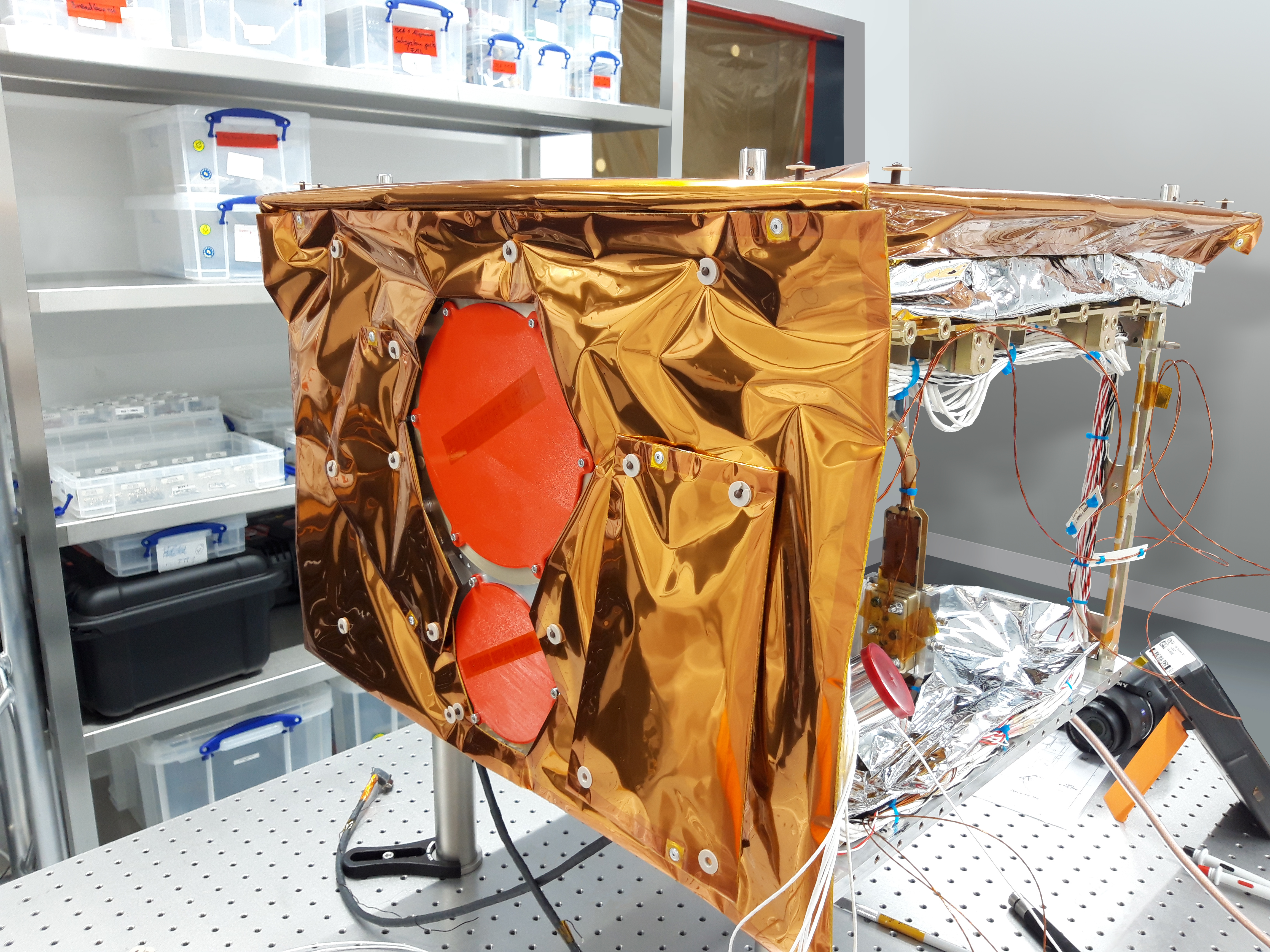
Weltraumpremiere auch für die neuartige Reflektorantenne BANT-1 von HPS
Am 14.01.2025 startete an Bord einer Falcon 9 – Rideshare-Mission Transporter-12 mit „SIGI“ der erste Satellit aus der NextSpace-Schmiede Reflex Aerospace, Berlin/München. „NextSpace“ ist der exklusiv für Reflex geschützte Begriff für die neue Schnelligkeit in Entwicklung, Fertigung und Bereitstellung von Raumfahrttechnik, gepaart mit innovativer Vielseitigkeit als Leitmotiv für die Leistung des Produktes.
Das galt in hohem Maße auch für ein wesentliches nicht bei Reflex gefertigtes Element des Satelliten: die von HPS entwickelte Breitband-primäre Reflektorantenne des Raumfahrt-Mittelständlers HPS GmbH (München, Deutschland) mit einer Hohlraum-Spiralantenne als axialer Einspeisung für eine große Bandbreite sowie beträchtlichen Gain – und das Ganze von der Bestellung zur Ablieferung in nur 12 Monaten.
HPS gratuliert Reflex Aerospace herzlich zum ersten Start eines seiner Produkte und freut sich auf die Zusammenarbeit bei den nun bevorstehenden weiteren NextSpace-Herausforderungen in den Weiten des Weltraums.
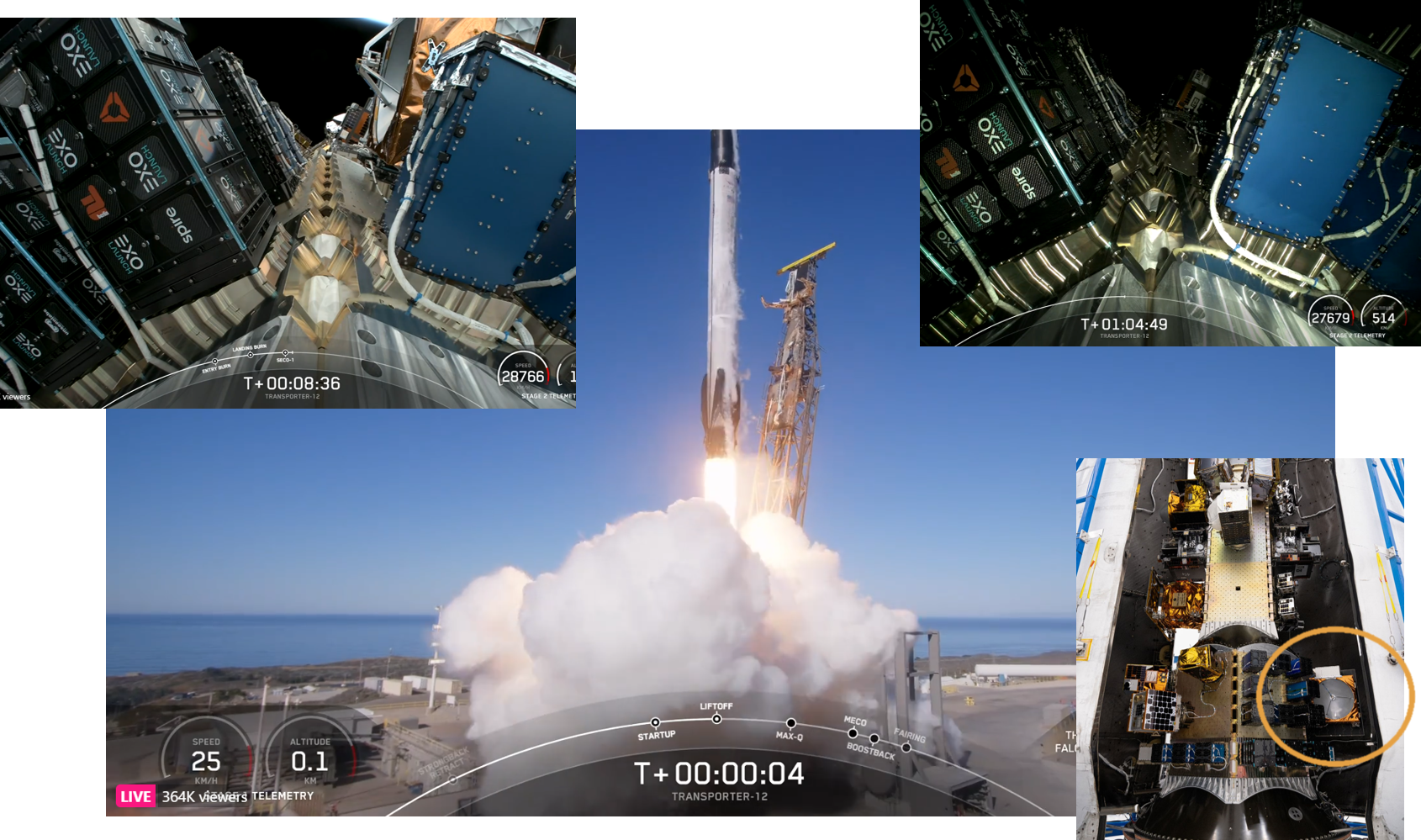
Pictures by SpaceX
Antennenspezialist HPS erobert mit Verifizierung innovativer 3D-Fertigung Neuland der RF-Anwendungen
Mittlerweile sind sich auch ehemals sehr skeptische Auguren der Raumfahrt einig, wesentlichen Einfluss auf den Verlauf der künftigen Entwicklung von anwendbaren Technologien wird vor allem die Fähigkeit zur weitgehend automatisierten Produktion von Leichtgewichtbauteilen in Serie bei gleichzeitiger Minimierung von Rohstoffen und höchster Zuverlässigkeit haben.
Zentrale Voraussetzung für die Umsetzung solcher Visionen ist jedoch weiterhin eine sehr klassische Step-by-Step-Verifizierung, in diesem Falle zweier von den HPS-Ingenieuren ausgewählter Materialien anhand der neuen ESA-Norm ECSS-Q-ST-70-80C.
Die europäische und die deutsche Raumfahrtagentur haben angesichts des Zukunftspotentials solcher Technologie ein vorrangiges Interesse am Erfolg der Forschung bei HPS und stellten die GSTP-Finanzierung für das Projekt 3DPAN2 bereit: „3D-Printed Antenna 2“ ist ein Nachfolger-Projekt des vor 5 Jahren abgeschlossenen Projektes 3DPAN, mit dem zunächst die prinzipielle Machbarkeit von 3D-gedruckten RF-Bauteilen gezeigt wurde.
Produktziel war eine extrem leichte X-Band Antenne mit einem Durchmesser von ~30cm für den Daten-Downlink von Erdbeobachtungssatelliten. Hergestellt wurde sie schließlich aus der Aluminium-Legierung SCALMALLOY beim Sub-Contractor APWORKS GmbH in Ottobrunn. Zudem wurde für ausklappbare Antennen ein filigranes Feed Support Bracket aus Titan vom langjährigen HPS-Vertrauenspartner, dem Fraunhofer-Institut für Werkstoff- und Strahltechnik IWS, Dresden, als Subunternehmen gefertigt.
Die jeweiligen Designs und FE-Analysen, sowie deren iterative Optimierung wurde derweil durch HPS in München selbst durchgeführt.
Die abschließenden Tests lieferten über alle Erwartungen positive Ergebnisse. Dies galt insbesondere für die RF-Performanz der X-Band Antenne in der Compensated Compact Range (Munich University of Applied Science MUAS). Auch die Beständigkeit gegen Vibration (Sinus + Random) wurde für beide Demonstratoren bei der Firma SGS GmbH, Geretsried, erfolgreich nachgewiesen: auch hier lief alles ohne Komplikationen ab, also vor allem ohne Beschädigungen oder Verformungen. Selbst ein abschließender TVAC-Test (10 Zyklen zwischen +120°C und – 120°C) zeigte keinerlei Risse oder Verformungen an den Demonstratoren.
Das Fazit des Projektes formulierte Olaf Stolz als zuständiger Projektmanager von HPS so: „Die Ziele der Verifikationsprozesse konnten ohne Einschränkungen umgesetzt werden: die additiv gefertigten Demonstratoren waren 20% bzw. 25% leichter als entsprechende konventionell gefertigte Bauteile – ein bekanntermaßen enormer Vorteil in der Raumfahrt. Dabei kam es zu keinerlei Einschränkungen der Qualifizierung für Raumfahrtanwendungen. Unser Dank gilt den Kooperationspartnern, besonders Frau Dr. Samira Gruber (Fraunhofer IWS) und Herrn Nicklas Schwab (APWORKS) für die extrem gute und erfolgreiche Zusammenarbeit in dem Projekt, sowie bei der ESA, namentlich Frau Isabel Olaya Leon, Technical Officer des Projektes 3DPAN2“.
HPS-CEO Ernst K. Pfeiffer freut sich: „Es ist fantastisch, schon jetzt werden bei uns in aktuell laufenden Flugprojekten 3D-Druck-Bauteile mit den Technologieergebnissen des ESA-GSTP-Programmes umgesetzt. Ein von uns vor 8 Jahren anvisiertes und für den Zukunftsmarkt essentielles Ziel ist jetzt damit erreicht.“
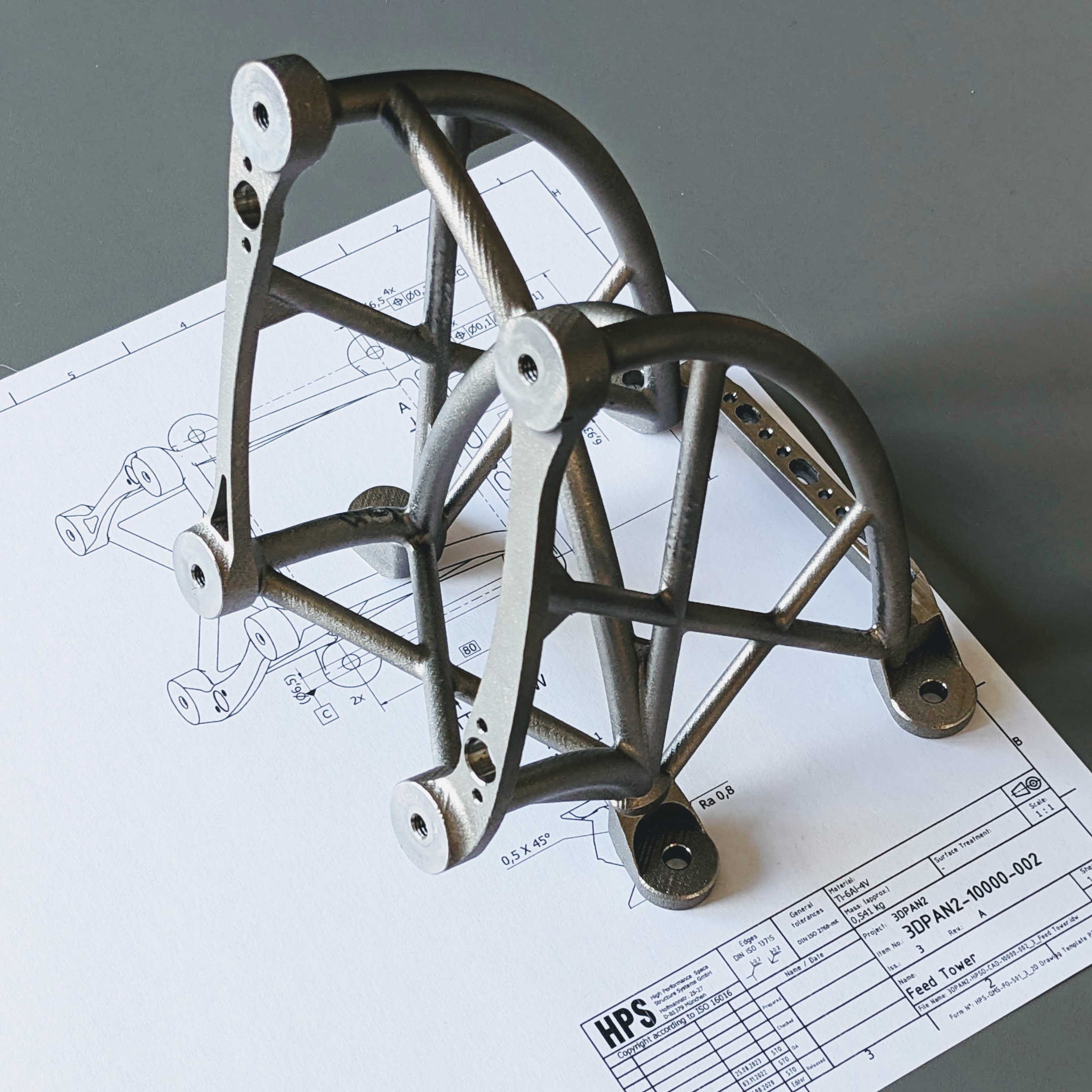
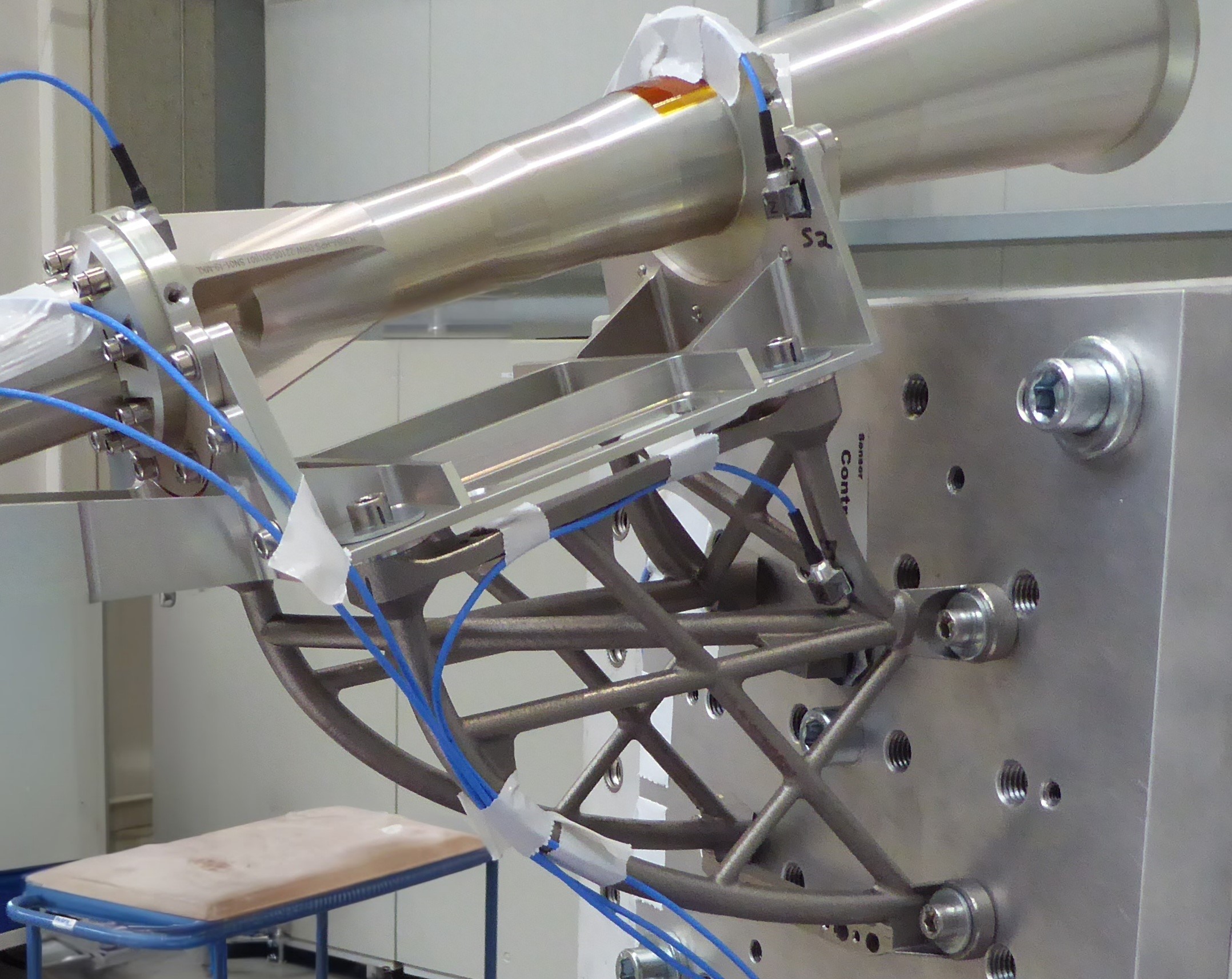
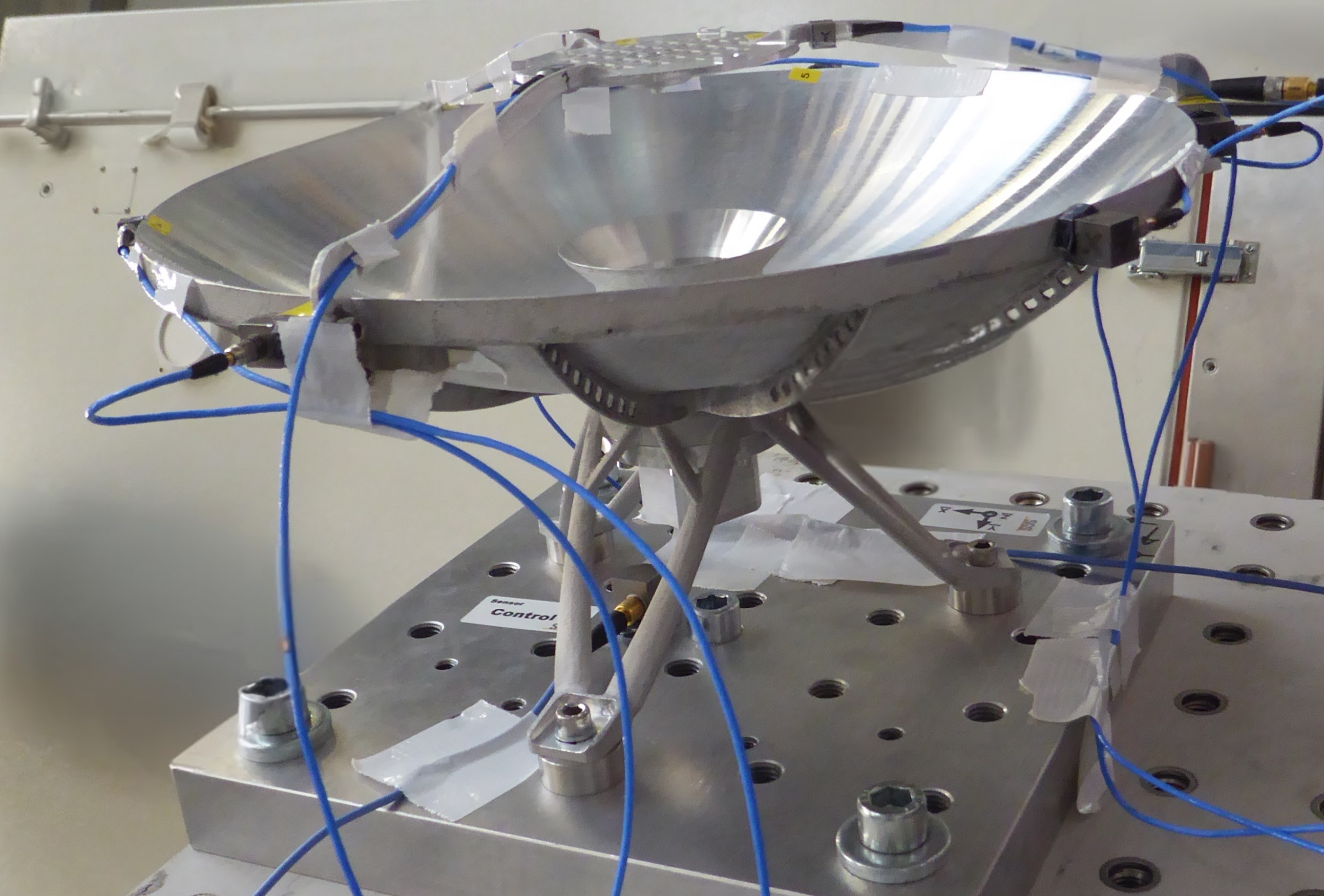
Dezember 2024
HPS Christmas Party 2024: Our Biggest Yet!
Last night, we celebrated the holidays together at our annual Christmas party – and this year was extra special!
For the first time, we hosted it on our new floor, making it the biggest Christmas party in HPS history!
The evening was filled with:
- Plenty of mulled wine and delicious food
- A variety of drinks to toast the season
- 12 inspiring mini-presentations (just 2-5 minutes each) by our Department Heads, CEO, CFO, CTO, Quality Management, HR, Procurement and Social Media, sharing insights and ideas.
It was a wonderful evening of connection, celebration, and looking ahead to an exciting future. Here’s to the amazing HPS team and the bright year ahead!
Antennenfertigung in Serie
Die Münchner Raumfahrtschmiede HPS ist seit über 20 Jahren dafür bekannt, wo immer möglich neue Wege zu gehen und mit Innovationen aller Art eine immer festere Brücke zwischen ClassicSpace und CommercialSpace zu etablieren. Dies gilt für Produkte wie beispielsweise entfaltbare Antennen aller Größen bis hin zu Prozessen wie etwa zur Serienfertigung der Produktfamilie von Deorbit-Segelmodulen (ADEO).
Mit der Umsetzung einer weiteren Prozessinnovation realisiert HPS nun auch im Antennenbereich neue Effizienzhorizonte; denn ein kommerzieller Kunde hat es eilig: über 20 Breitband Antennen werden benötigt, und das in einem Zeitraum von nur 12 Monaten, Start JETZT. Zwar ist HPS schon aus einer Vielzahl von erfolgreich erfüllten Antennenaufträgen – ob nun aus dem institutionellen oder dem kommerziellen Bereich – für die von den Kunden geschätzte Routine der Qualitätsherstellung auf gleichbleibend hohem Niveau bekannt. Doch nun läutet das Unternehmen mit der anlaufenden Kleinserienfertigung eine weitere
Entwicklungsstufe ein, die Qualitätsmerkmale von konventioneller und neuer Raumfahrt miteinander zu etwas Neuem und dabei noch Besserem zu verschmelzen. Und das trotz allen Hochdrucks mit der Kraft, die aus der Ruhe kommt.

November 2024
HPS and EXOLAUNCH: Making Space Clean Again
HPS is happy to join forces with the Germany-based Exolaunch and is fully engaged to support customers of Exolaunch by enabling this very special and successful NewSpace-launch service provider to grant priority access to the delivery schedule of flight-proven ADEO* deorbit sails which are currently in high demand.
EXOLAUNCH’s COO Jeanne Allarie and HPS’s CEO Ernst Pfeiffer signed an Agreement on Space Tech Expo 2024 in Bremen in a great joint spirit (see pictures) the ambitious endeavour of
- being a role model for a sustainable use of space and
- of raising awareness with all potential customers on an existing solution for deorbiting: ADEO-modules are easy, affordable and reliable to contributing significantly to Making Space Clean Again.
See for the respective EXOLAUNCH announcement
(* ADEO-modules are needed to allow a satellite deorbit after its “End-of-Business” within five years; satellites without this or any kind of deorbit accelerator do not get clearance for launch anymore.)
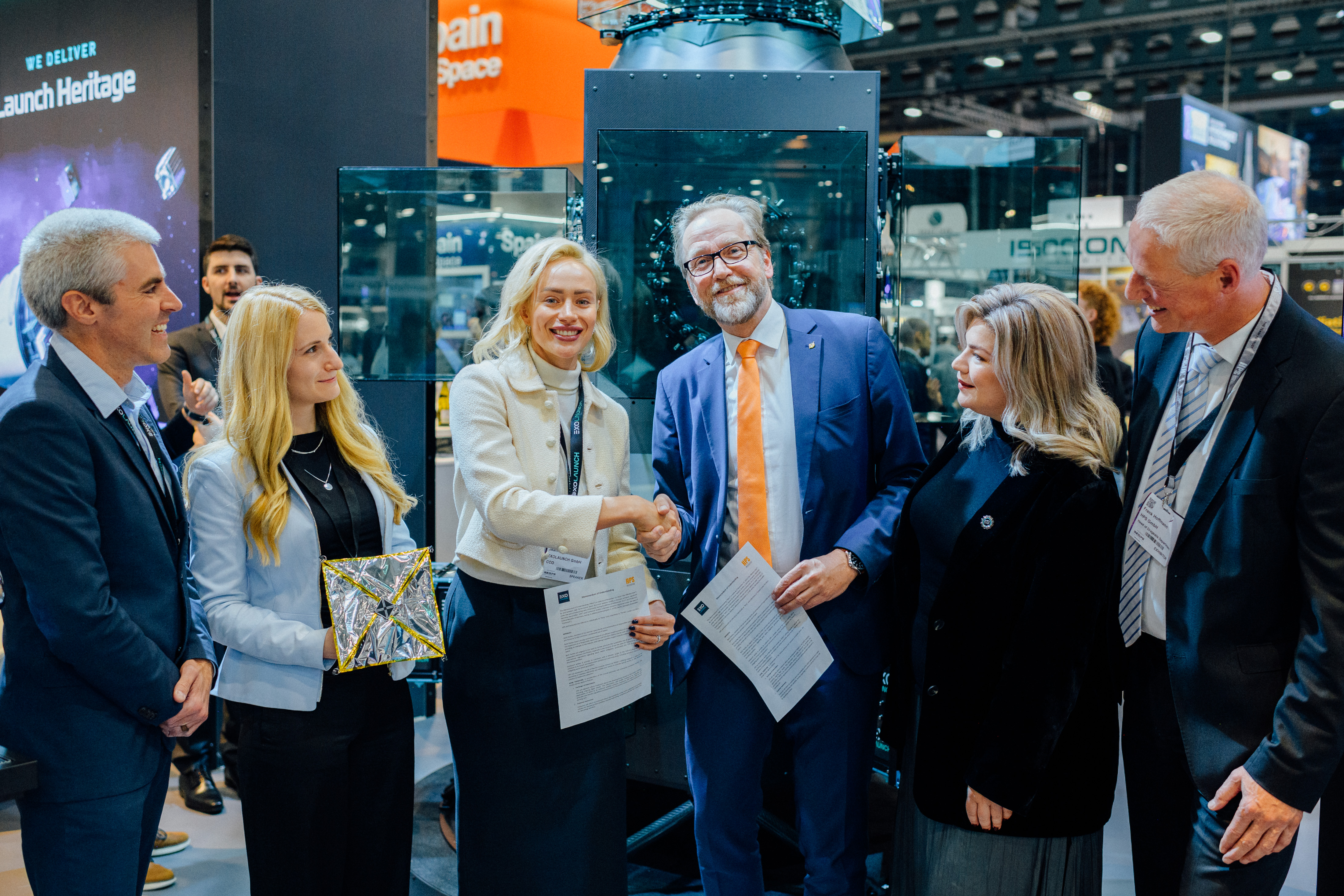
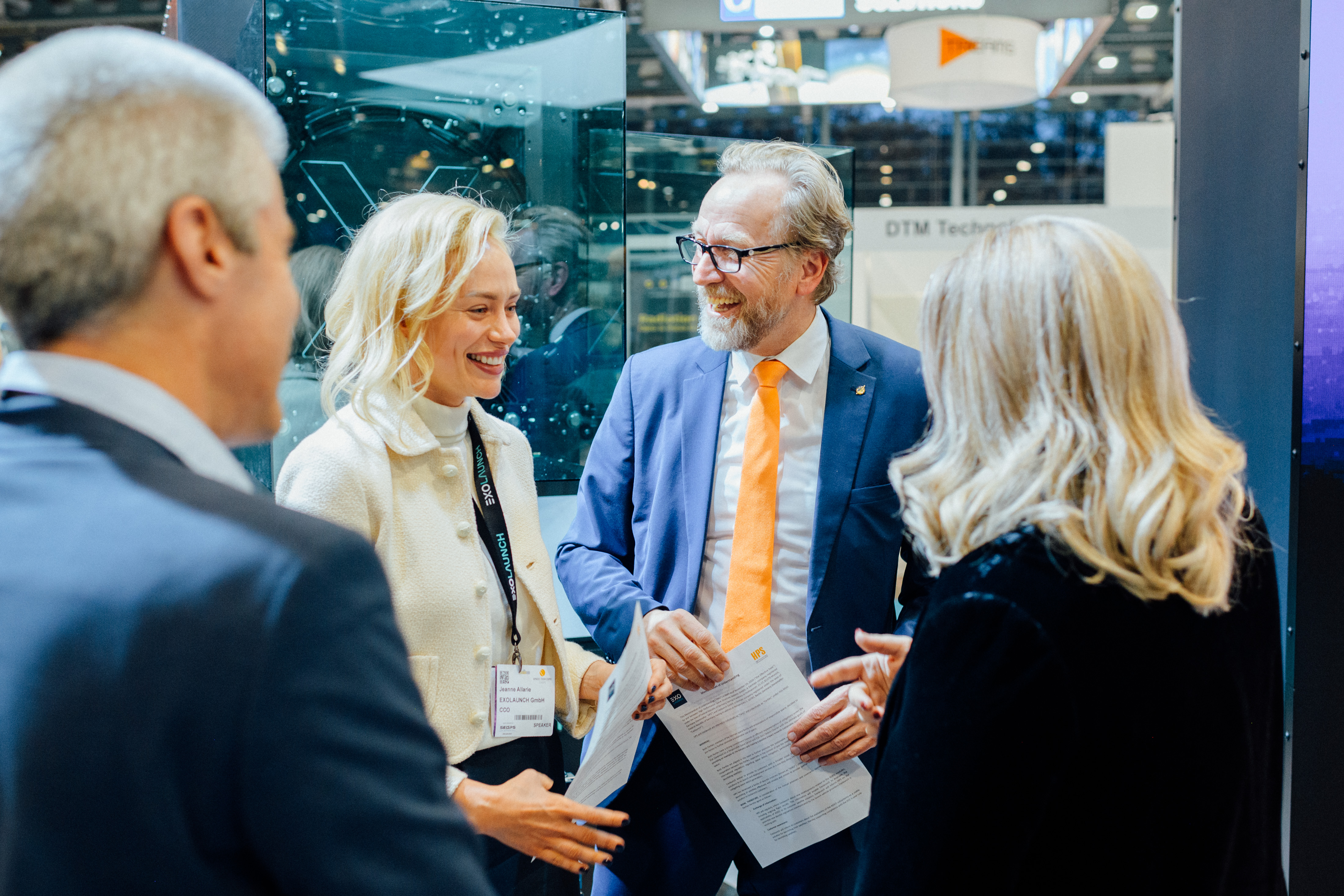
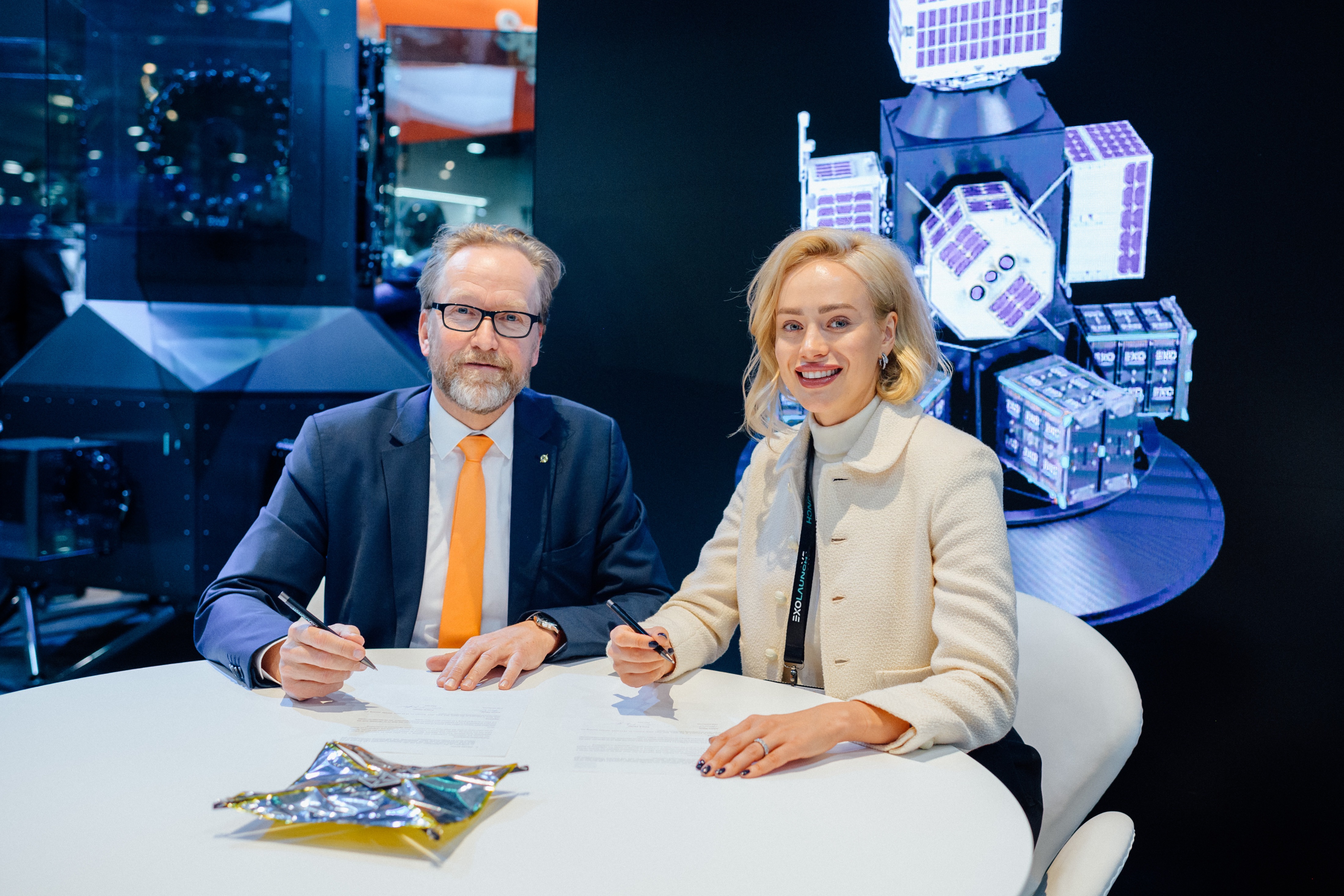
November 2024
Deutscher Raumfahrtchef Dr. Walther Pelzer setzt mit DLR-Delegation einen Besuchsschwerpunkt bei HPS-Gruppe
Bei der traditionellen Delegationsrunde des DLR am Eröffnungstag der Space Tech Expo in Bremen setzte der Chef der Deutschen Raumfahrtagentur im DLR, Dr. Walther Pelzer, einen wohlbeachteten Schwerpunkt bei den KMU der deutschen Raumfahrtindustrie. Besonderes Augenmerk galt hier der Innovationsschmiede HPS. Und diese war gleich in Gruppenstärke vertreten: mit HPS Deutschland (München), HPS Rumänien (Bukarest) und dem Joint Venture-Unternehmen HPtex (Münchberg, Deutschland).
Firmenchef Ernst K. Pfeiffer betonte unter Verweis auf wegweisende Antennen-Projekte wie HERA und EUCLID die gewonnene deutsche Führungsposition bei den Spezialantennen für Raumfahrtmissionen. Ebenso führend positioniert sich HPS auch im kommerziellen Bereich über das Erfolgsprojekt des Bremssegels ADEO, mit dem die neue 5-Jahresregel für den Satellitendeorbit eingehalten werden und die Satelliten damit startgenehmigungsfähig bleiben.
In seiner Funktion als Sprecher der deutschen Raumfahrt-KMU stellte Ernst Pfeiffer auch bei dieser Gelegenheit mit Nachdruck heraus, welch enorme Bedeutung den fähigkeitsfördernden Technologieprogramme von DLR und ESA für den Mittelstand als Innovationsrückgrat der Branche zukommt. Unersetzbar, so Pfeiffer, ist die punktgenaue Förderung der Technologiefähigkeit von KMU über dezidierte Wettbewerbsräume, die für KMU reserviert bleiben.
Livedemonstrationen z.B. von einem Funktionsmodelle des ADEO-Bremssegels oder eines skalierten Modells eines entfaltbaren großen Antennenreflektors, ergänzt um Produktdemonstrationen von HPS-Rumänien (z.B. Radiator) und aus der MESH-Produktion von HPtex (z.B. Ka-band Mesh Sample für den Einsatz bei der Copernicus Mission CIMR) rundeten das Besuchsprogramm ab.
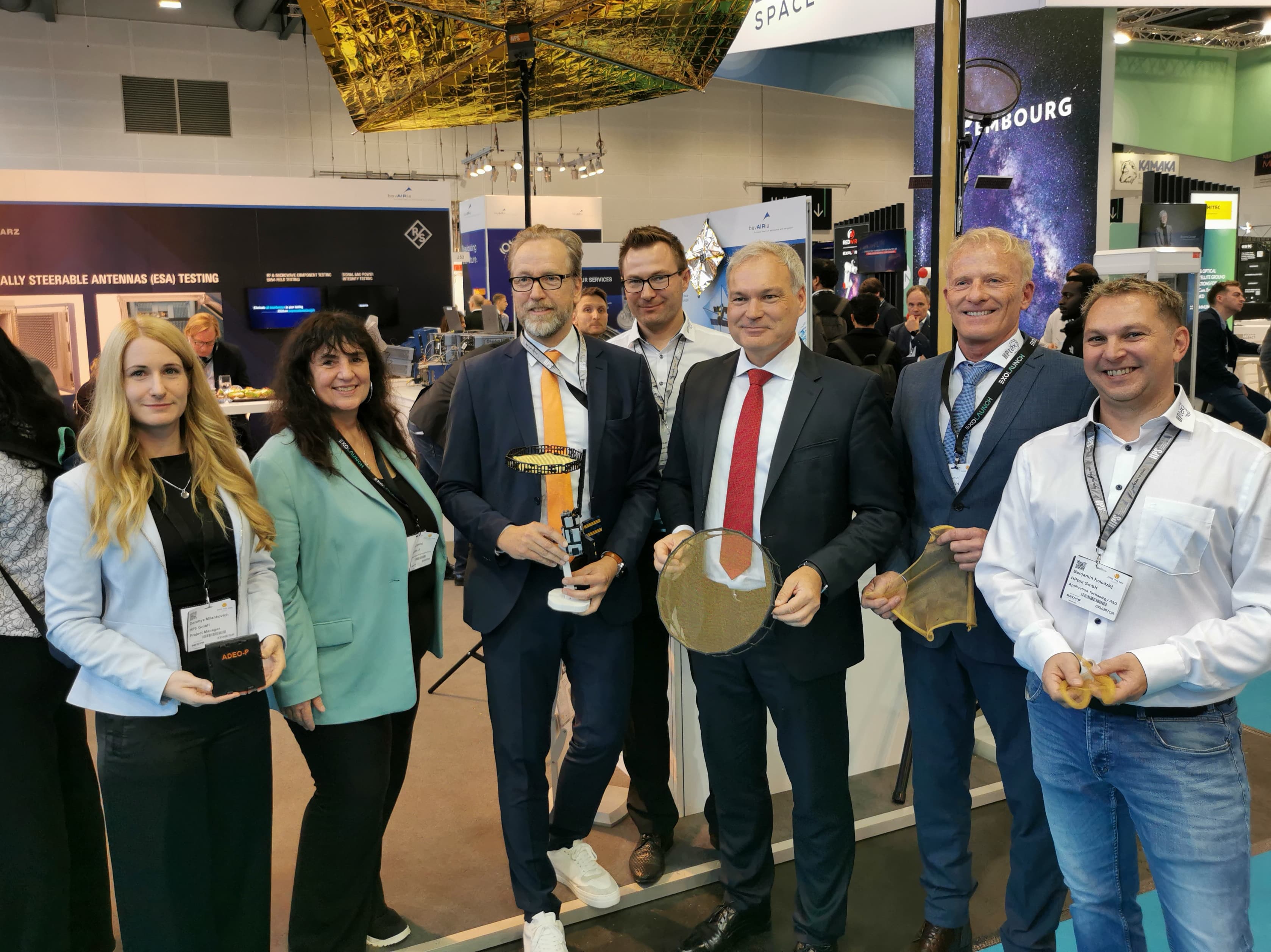
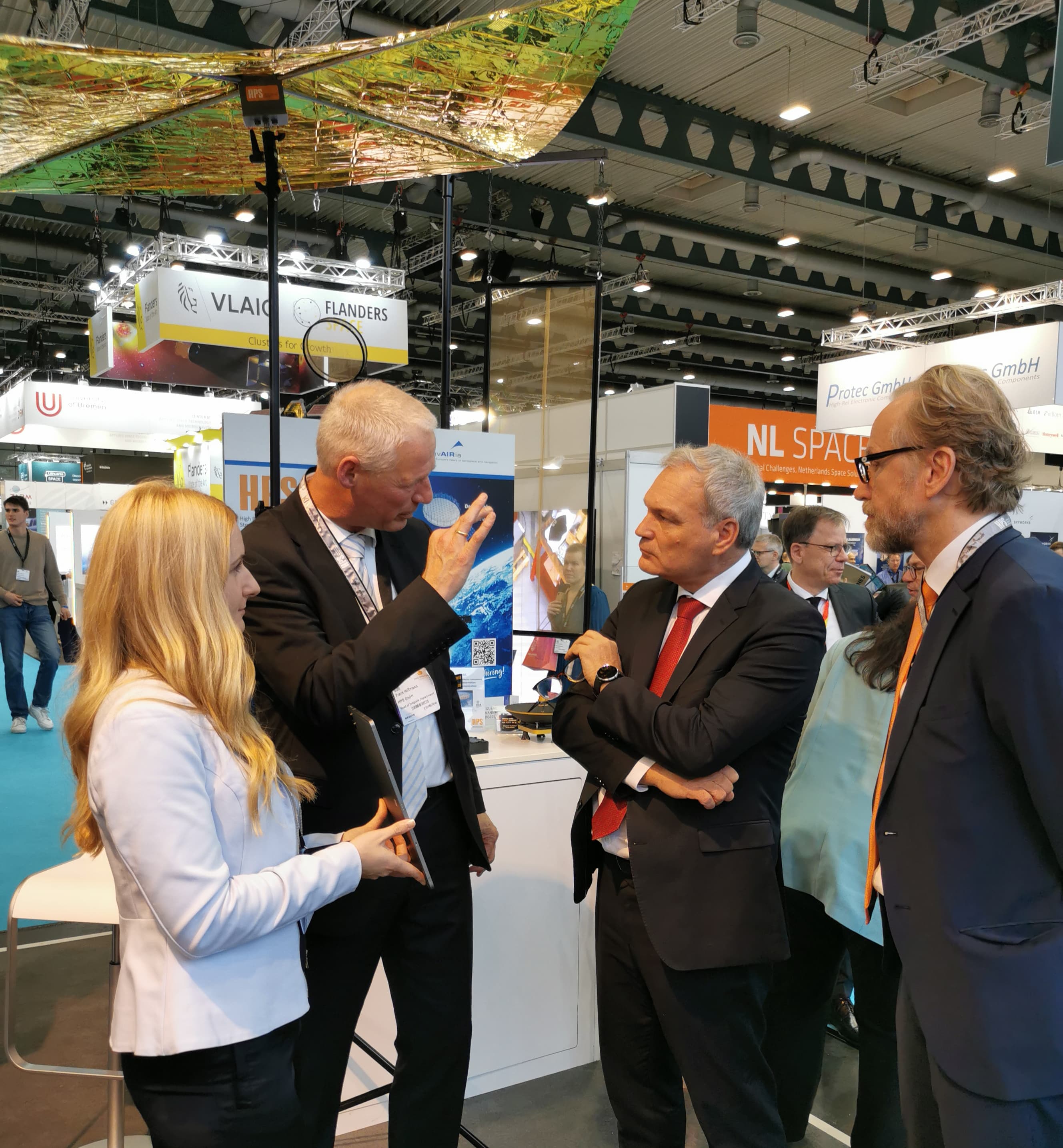
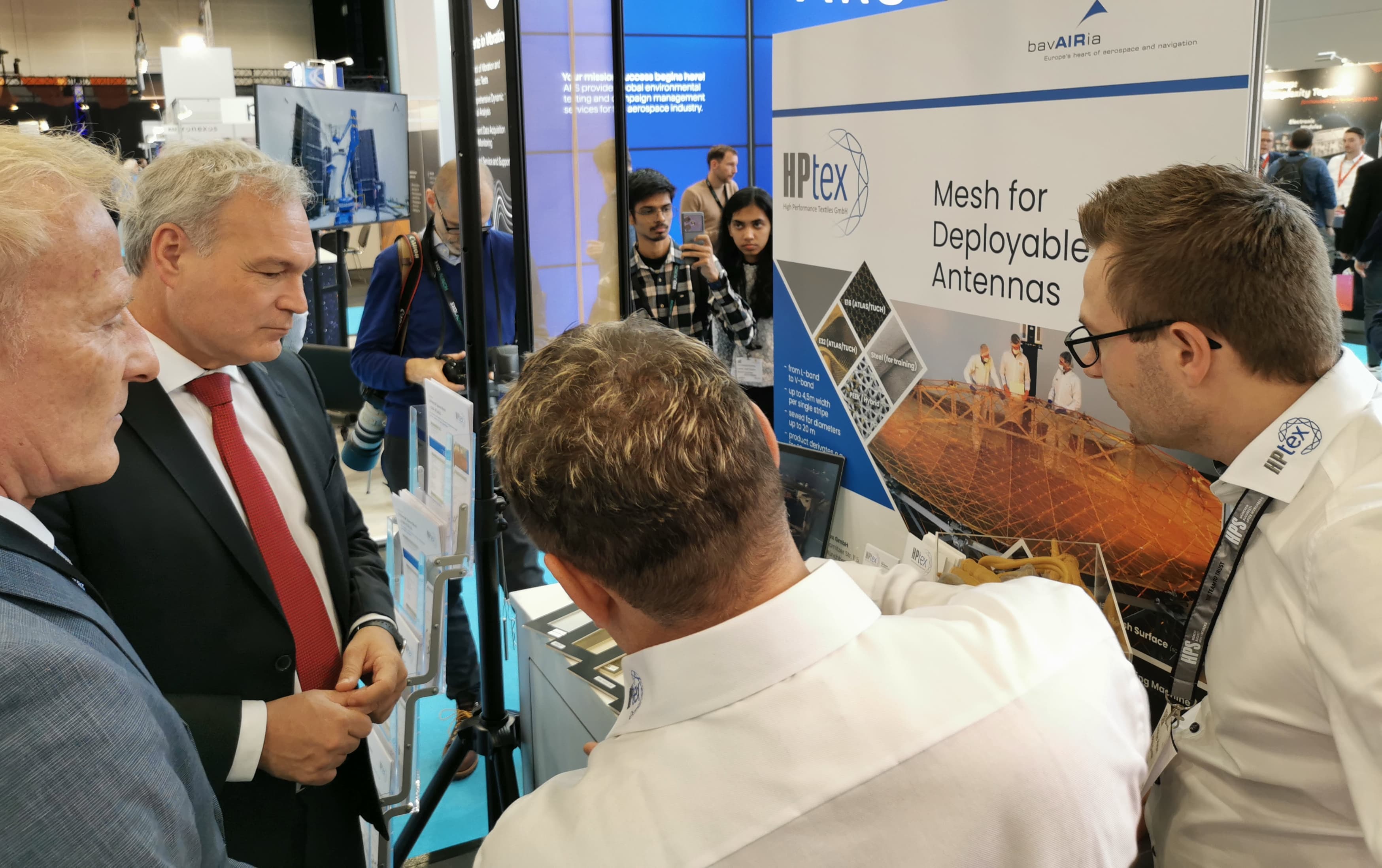
HPS auf der SpaceTechExpo 2024
November 2024
HPS auf der SpaceTech Expo in Bremen: Volles Produkt-Portfolio der ganzen Unternehmensgruppe auf der Präsentationsfläche der bayerischen Raumfahrtunternehmen (Stand Nr. J53)
Die SpaceTech Expo in Bremen hat sich in Rekordzeit zur konkurrenzlos größten und bedeutendsten Raumfahrtmesse Europas entwickelt. Über 700 Ausstellungsteilnehmer zählt die Veranstaltung in diesem Jahr. Mit ihrem rasanten Wachstum ist die SpaceTech Expo in Bremen selbst das beste Beispiel für die stark zunehmende Bedeutung nicht nur von Raumfahrtfähigkeiten im Allgemeinen, sondern eben auch der jungen NewSpace-Unternehmen, die mit Macht auf die kommerziellen und institutionellen Märkte für Raumfahrtprodukte und Dienstleistungen drängen.
Eine ganz besondere Rolle jedoch nehmen diejenigen Unternehmen ein, deren Portfolio sowohl den New- wie auch den Classic Space-Bereich bedient und somit eine Brücke zwischen beiden im eigenen Haus baut. Eines der prominentesten Beispiele ist die HPS-Unternehmensgruppe.
Diese Innovationschmiede der europäischen Raumfahrt mit Zentrale in München, Tochtergesellschaft HPS Romania in Bukarest und Joint-Venture Partnerschaft HPTex in Münchberg nahe Bayreuth bringt denn auch alle Produktbelege für diese Positionierung mit nach Bremen. So werden institutionelle Kunden beispielsweise auf der Suche nach europäischen Lösungen von großen entfaltbaren Reflektor-Subsystemen bei HPS fündig, welche bei kommenden ikonischen Erdbeobachtungs-Missionen der ESA wie etwa „Cryorad“ und „Hydroterra“ idealerweise eine konstitutive Rolle spielen werden.
Das Herzstück dieser Subsysteme entsteht dabei ebenfalls im eigenen Haus: bei der HPTex GmbH werden reflexive Meshflächen aller Größenordnungen für entfaltbare Antennen gewebt. Darüber hinaus stellt die HPTex – 2024 erstmals mit eigenem Stand in Bremen – sogar Stainless Steel Mesh für Trainingszwecke der Kunden aus aller Welt her.
Auch aus Bukarest werden zwei Repräsentanten in Bremen anwesend sein; Schwerpunkte hier: vor allem Secondary Structures, Thermal Hardware (MLI, Thermal Straps, Radiators), MGSE und Purge Equipment. Sämtliche Produkte sind skalierbar für große Missionen wie auch für Kleinsatelliten und Cubesat -Missionen.
Über dem Gesamtportfolio der HPS-Präsenz in Bremen jedoch „schwebt“ im Wortsinne das Starprodukt des Hauses HPS, welches derzeit weltweit wie kein zweites Furore macht, interessant vor allem für Kunden aus der NewSpace-Szene: ADEO, das Bremssegel für das automatische geordnete Deorbiting ausgedienter Satelliten fast jeder Größenordnung am Ende ihrer Mission. Der Grund für den ADEO-Hype ist einfach wie einleuchtend: Ohne technische Ausrüstung zur Gewährleistung eines auf maximal 5 Jahre limitierten Deorbits erhalten Satelliten keine Genehmigung mehr für den Start auf LEO. Technisch steht zum einen der „handgesteuerte“ Abstieg zur Wahl. Er verbraucht allerdings neben erheblichen Personalressourcen auch bis zu 60 Prozent des Treibstoffes, welcher eigentlich den Satelliten möglichst lange auf seinem Orbit halten sollte, damit er überhaupt sein Geld verdienen kann. Die andere Möglichkeit ist die Montage eines sich bei Missionsende entfaltendes Bremssegels auf dem Satelliten, das seinen Host dann automatisch „nach Hause“ bringt. Industrieller Weltmarktführer dieser Technologie auf allen Kontinenten ist HPS aus München; auf der SpaceTech Expo wird zu einem noch nicht festgelegten Zeitpunkt eine Livedemonstration der Entfaltung eines ADEO der PICO-Klasse stattfinden. Dies könnte ein Highlight sein für alle interessierten neuen Kunden. Die Flut von Anfragen zu Preisen und Schnittstellen spricht Bände.
HPS-CEO Ernst K. Pfeiffer wird selbst neben der Management-Ebene der Gruppe aus Rumänien und Deutschland über die gesamte Dauer der Messe vor Ort sein; er hat sowohl als Firmenchef wie auch als Sprecher der KMU der Branche, vertreten über den AKRK und den Verbund „Best of Space“ eine dezidierte Meinung zum Event: “Europas Nicht-Abhängigkeit und Souveränität durch deren Raumfahrtindustrie ist besonders nach der Präsidentschaftswahl in den USA so wichtig wie noch nie zuvor. Was wir hier in Bremen sehen werden, ist der Gegenentwurf zum viel zu weit verbreiteten Phlegma einer bürokratisierten Branche und zu einem sich seit einigen Jahren eingeschlichenen „wir können ja eh nichts ausrichten“: frische Ideen, forsch und gerne auch frech vorangetrieben – das ist es, was die Raumfahrt braucht, dazu auch das Siegel „Made in Germany“. Dabei bedingen und befruchten sich NewSpace und Classic Space gegenseitig, denn auch noch so disruptive Entwicklungen bedürfen der Verankerung im Bekannten und Bewährten. Dafür stehen nicht zuletzt auch wir von der Unternehmensgruppe HPS.“
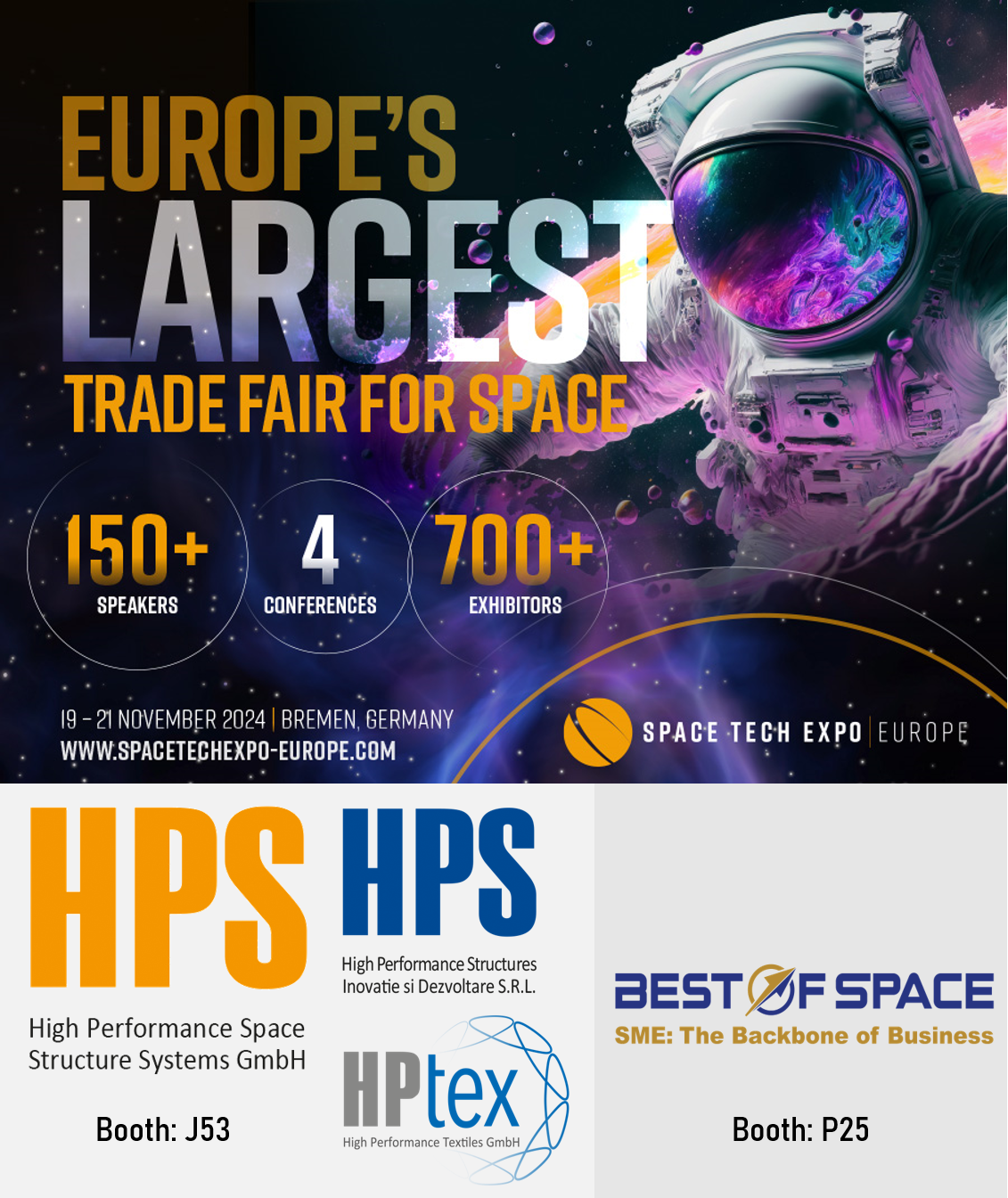
Oktober 2024
Clean Space Days der ESA im Oktober: ADEO aus dem Hause HPS im Fokus
Auch 2024 lud das Clean Space Team der ESA zur Fortsetzung der schon in der Vergangenheit hoch erfolgreichen Veranstaltung ein.
Im Mittelpunkt der viertägigen Veranstaltung stehen die Fortschritte in den Bereichen Ökodesign, Zero Debris und Wartung in der Umlaufbahn. Das Kalendarium der Vorträge konzentriert sich 2024 unter anderem auf diese Themen:
- Ökobilanzierung für Raumfahrtaktivitäten
- Deorbit-Technologien
- Entsorgung von Debris
- störungsfreier Himmel für die Astronomie
- IOS-Missionen
- Kreislaufwirtschaft für die Raumfahrt
Während manche Präsentationen Ideen und technische Vorstellungen eher in statu nascendi beleuchteten, stellte HPS-Manager Frank Hoffmann die bereits an den europäischen und seit Neuestem auch nordamerikanischen Märkten erfolgreiche Produktfamilie der ADEO-Reihe vor: Deorbit-Segeltechnik zur automatischen Selbstentsorgung des Satelliten nach Ende der Mission.
Für jede Klasse von Raumfahrzeugen bietet das ADEO-System eine passend maßgeschneiderte Lösung, ob als „Pico“ (1-20 kg), „Cube“ (5-50 kg), „Nano“ (20-250 kg), „Medium“ (100-700 kg), oder gar „Large“ (500-1500 kg). Zur verzögerungsfreien Versorgung der Satellitenhersteller werden alle Bestellungen nach Möglichkeit von HPS direkt aus der Serienfertigung bedient.
Aufgrund des Umstandes, dass die Vorschrift zur Mitführung eines geeigneten Entsorgungssystems wie ADEO ab Oktober 2024 praktisch für alle Satelliten Voraussetzung für deren Starterlaubnis ist, sind längere Lieferzeiten möglich und durch frühzeitige Bestellungen weitgehend vermeidbar.
Die Clean Space Days klingen zum Ende der Woche aus, doch auch für diese erfolgreiche Veranstaltung der europäischen Raumfahrt gilt die Weisheit: Nach dem Event ist vor dem Event.
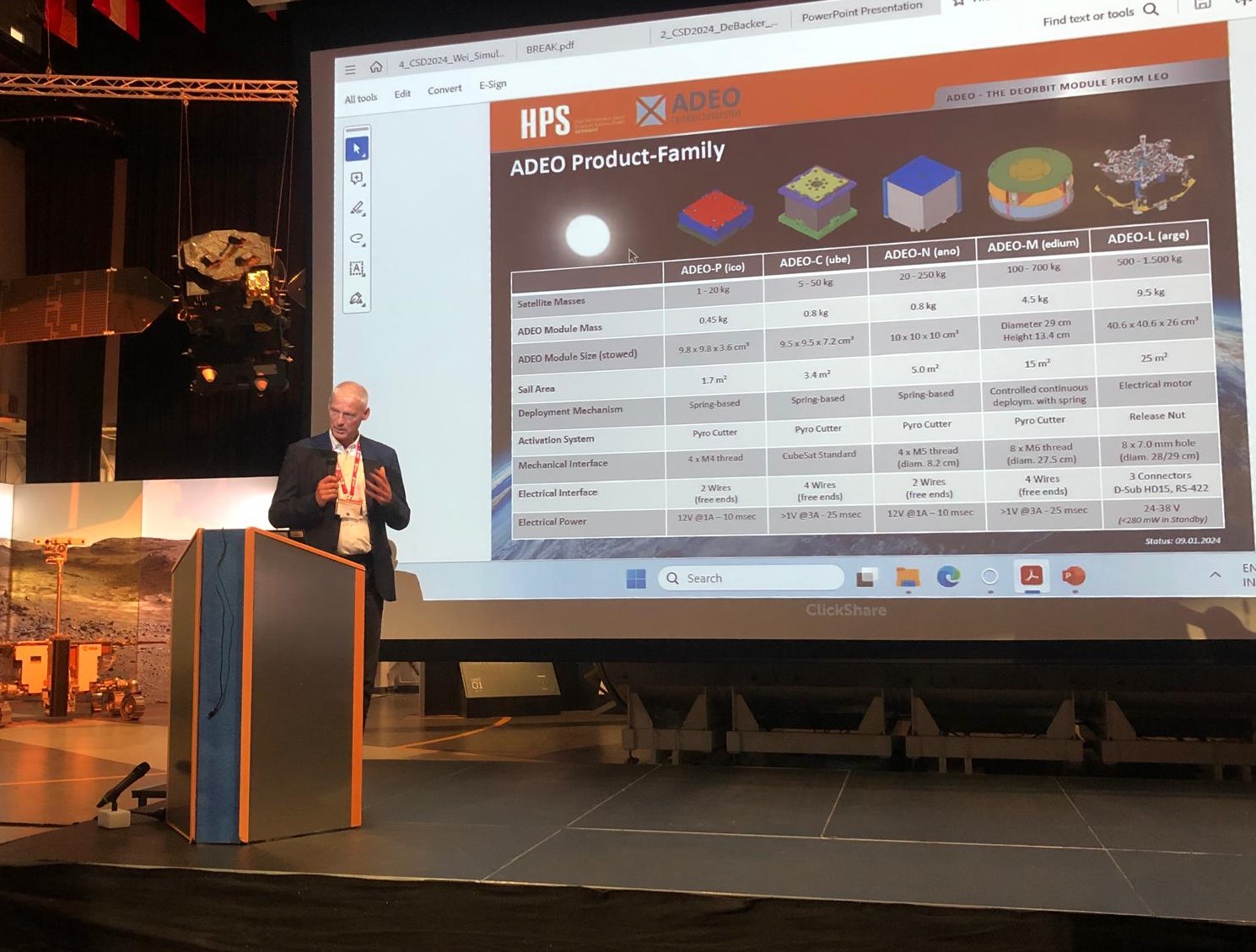
Oktober 2024
HERA auf dem Weg: Europa schreibt mit HPS-Antenne ein neues Kapitel Raumfahrtgeschichte
Am Montag, den 7. Oktober 2024 startete in Cape Canaveral, Florida, an Bord einer Falcon 9 von SpaceX mit dem Satelliten HERA die Mission, mit der Europa Science Fiction auf die Plätze verweisen wird. Nach rund drei Jahren Flug in die Tiefen des Alls wird der Satellit 2027 beginnen, die Folgen des Einschlags der amerikanischen DART-Mission zur Ablenkung der Flugbahn des Asteroiden Dimorphos genau zu dokumentieren.
Ein zentrales Element des HERA-Satelliten ist das X-Band System aus dem Hause des deutschen Antennenspezialisten HPS (München): eine komplette Antenne mit 1,2 Metern Durchmesser aus hoch stabilen Kohlefasern, hoher Eigenfrequenz bei gleichzeitig guter Reflektivität und zudem von extrem geringem Gewicht. Für HPS, mit den Erfahrungen aus seinen großen Antennenprojekten z. B. der Missionen Euclid (ESA, direkter Auftraggeber TAS-SP) und Heinrich-Hertz (DLR, direkter Auftraggeber TESAT/OHB) ist die Antenne ein bewährtes Technologie-Terrain. Nichtsdestoweniger spielt die HPS-Antenne als einzige Verbindung für die wissenschaftlichen Daten zwischen Satellit und Erde eine enorm wichtige Rolle für die gesamte Mission.
Mit einer Gesamtmasse von nur 7,5 kg ist sie im Prinzip eine vergrößerte Version des Modells, das HPS für das Euclid-Observatorium der ESA gefertigt hatte, welches bereits 1,5 Millionen km von der Erde entfernt arbeitet n wird. Die Antenne von Hera wird jedoch noch viel größere Entfernungen als Euclid abdecken müssen, da sie bis maximal über 400 Millionen km weit senden und empfangen wird. Um das leisten zu können, verstärkt die High Gain Antenna von HPS ihr Signal um mehr als das 4000-fache, um die Erde zu erreichen, fokussiert auf nur ein halbes Grad, so dass sich das gesamte Raumschiff bewegt, um sich auf seinen Heimatplaneten auszurichten.
Für Flug und Mission ist die High-Gain-Antenne an der Außenseite des Raumfahrzeugs angebracht. Sie wird dort vor den extremen Temperaturen im Weltraum mit einem Kapton-Germanium-Sonnenschutz thermisch isoliert, während die Funkwellen weiterhin durchgelassen werden. „Als Ingenieure sind wir zwar dafür bekannt, im Umgang mit den Herausforderungen an unsere Technik jederzeit auf Fakten konzentriert und cool wie Mr Spock zu bleiben; wenn es aber dann tatsächlich soweit ist, dass Europa mit unserer Antenne Raumfahrtgeschichte schreibt, dann dürfen auch wir einmal sehr stolz und emotional sein“, sagte Ernst K. Pfeiffer, CEO von HPS.
Auch HPS-CTO Paolo Zolla war ergriffen vom Start, den er direkt am Cape Canaveral in den USA verfolgte: „Der Start war schon seit unserer Ankunft in Florida aufregend, als uns der Polizist am Flughafen sagte, dass bald ein großer Hurrikan kommen würde. Am Tag des Starts regnete es sehr stark und der Wind wehte sehr stark. Wir dachten, der Start könnte abgesagt werden. Aber dann, wenige Minuten vor dem Start, hörte der Regen auf und der Wind ließ nach. Der Startleiter sagte: „Wir können starten!
Der Start der Falcon 9 war ein dramatischer Anblick. Die neun Triebwerke zündeten und hoben die Rakete langsam an, bevor sie schnell beschleunigte und eine Spur aus Flammen und Rauch hinterließ. Der Boden rumpelte, als die Rakete in den Himmel aufstieg. Zu sehen, wie sie mit der HERA-Sonde und ‚unserer‘ Antenne an Bord über den Wolken verschwand, hinterließ einen bleibenden Eindruck – eine Mischung aus Stolz und dem Gefühl, Teil einer außergewöhnlichen Mission zu sein.“
